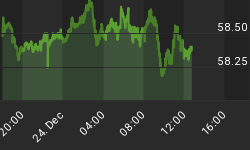Global spending on solar energy declined by almost a quarter last year to US$130.8 billion, mainly on the back of a regulatory policy overhaul in China that led to an oversupply of solar panels, driving prices down. This, in turn, resulted in an 8-percent slide in overall renewable energy investments to US$332 billion, data from a new report by Bloomberg New Energy Finance has shown.
China took markets by surprise in June last year by announcing that it would not issue approvals for any new solar power installations in 2018 and would also cut the feed-in tariff subsidy that has been a major driver of the solar business in the country that accounts for as much as 50 percent of capacity.
Following the June decision of the Chinese planning commission, global PV panel prices dropped by 12 percent, which benefited buyers of PV panels but served a blow to producers, and not just those in China. Yet, the investment cut was the largest in China: investments in renewable energy there fell by about 50 percent or US$40 billion last year.
This had a beneficial effect on capital costs, the BNEF analysts said. In 2018, the cost of installing a megawatt of solar generation capacity shed 12 percent. Now, this was not because of major cost reductions as much as a global PV module oversupply that was already emerging before China overhauled its solar industry regulations, but it was still substantial as far as cost cuts go.
While the news about falling panel costs is certainly good as it is making solar energy more competitive, the BNEF report was generally of the “cold shower” variety as a whole. The Bloomberg researchers warned that despite a surge in renewable energy investment since 2004, when the world spent less than US$62 billion on cleaner energy, as global energy demand grew, so did the consumption of fossil fuels. This effectively offset the gains in carbon emissions reductions achieved through the growing use of alternative energy sources. Related: Palladium Surpasses Gold As Demand Continues To Rise
Commenting on the report’s findings, BNEF analyst Jenny Chase, head of solar analysts, said “2018 was certainly a difficult year for many solar manufacturers, and for developers in China. However, we estimate that global PV installations increased from 99GW in 2017 to approximately 109GW in 2018, as other countries took advantage of the technology’s fiercely improved competitiveness.”
This year promises to be tough as well, at least in China. Earlier this month, the government said it will only approve new solar and wind power capacity if it matches the country’s coal benchmark on price.
One of the reasons for this move is the weight of subsidies that prompted last year’s regulatory change. Another, according to Forbes’ John Parnell, was the fact that Chinese companies are building solar projects abroad that produce electricity much more cheaply than the installations at home.
China is still the biggest spender on renewables, the BNEF report established, so it will remain key to the world’s total carbon emission reduction success, regardless of where capital costs of solar installations go.
By Irina Slav for Oilprice.com
More Top Reads From Safehaven.com

















